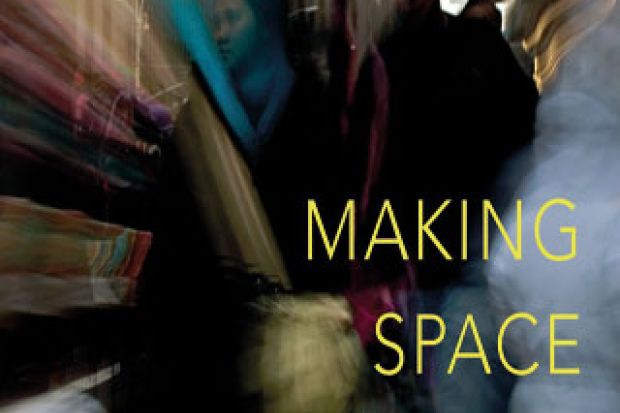I am a geek, at heart. And neuroscientist Jennifer Groh’s book is geek to the core, so we get along just fine. But the question I ask myself is: would The Others – you know, normal people – enjoy this wealth of beautifully intertwined information and knowledge about how sensation and perception work in the brain?
Ultimately Making Space is a book about who we are, physiologically. There is much to praise here, and a sense of pride and joy runs through my veins – in fact my nerves, to be more precise – as I read it, revelling in the accuracy, the footnotes, the basting of the concepts together. When I read it pretending to be a lay reader I long for less detail and more story; when I read it as a scientist, not so much. Achieving a delicate balance between the two is never easy, and probably there are several meta-stable points in those narrative science-dissemination dynamics, and arguably even different ones for different publics. (Apologies for the nerdiness in the development of the concepts: I am just trying to match the prose of this book at a theoretical level.)
As you begin the journey, it becomes clear that Groh’s vision is straight and crystalline. It is exhilarating to feel her energy and cautious optimism about our capacity to understand how we perceive, and how that could lead to an explanation of how we go around and about in the world. She makes clear from the off that the way to understand how the “water of the brain” turns into “the wine of consciousness”, as philosopher of consciousness David Chalmers put it, is through the unravelling of the mechanisms of sensory stimuli processes; the things we can measure. But how we think, feel, reason, have ideas, Groh says, we cannot measure. And we may gain insight only by understanding the mechanisms of the “easy” mental processes, such as recognising objects or navigating the space around us. I think this approach is too prudent, and lacks the virtue of asking braver, more intractable questions.
How we see and how we attend to what we see is well framed here as Groh describes the physiology of the eye and its visual systems, and the key idea of receptive fields is explained in valuable detail. These concepts will be solidly linked, in following chapters, when she delves into audition and space, and comes back to auditory and visual information integration. I particularly enjoyed her description of ventriloquism, an artistic genre I despise but find extremely interesting scientifically. Groh deftly punctures the notion that the voice is “displaced” to the puppet, and explains that context is what supplies the illusion of a puppet talking. As the non-flesh character moves to the accents of speech and adopts the stance of a speaker, and the ventriloquist pretends to be a listener, our visual auditory matching means that the sounds seem to come from 50cm to one side of the real locus of the sound.
I think that if we are to tell a story as scientists, as now seems to be the imperative, the story must be accurate in order to be educationally worthwhile. Groh’s book would be a valuable first read in the syllabuses of psychology, cognition or cognitive neuroscience, given its effective, engaging explanation of perception from psychology to brain (and vice versa). After that, students could start in on the textbooks, which require an effort of concentration and a different mental skill set, exactly because they do not tell a tale, but serve up the naked facts.
In the final chapter of Making Space, Groh moves to more speculative ground by trying to link sensory perception and thought. This section is dense and short and feels detached from the other chapters, and indeed, she warns us of just that. But I still feel there is room for more: more theories on how the brain works, especially those that try to link sensation and perception with ideas, and metacognition with flexible thought and abstract reasoning. Despite this book’s many virtues, ultimately Groh stays in her comfort zone, and only briefly comes out to see the broader landscape.
Making Space: How the Brain Knows Where Things Are
By Jennifer M. Groh
Harvard University Press, 256pp, £20.95
ISBN 9780674863217
Published November 2014
Register to continue
Why register?
- Registration is free and only takes a moment
- Once registered, you can read 3 articles a month
- Sign up for our newsletter
Subscribe
Or subscribe for unlimited access to:
- Unlimited access to news, views, insights & reviews
- Digital editions
- Digital access to THE’s university and college rankings analysis
Already registered or a current subscriber? Login





